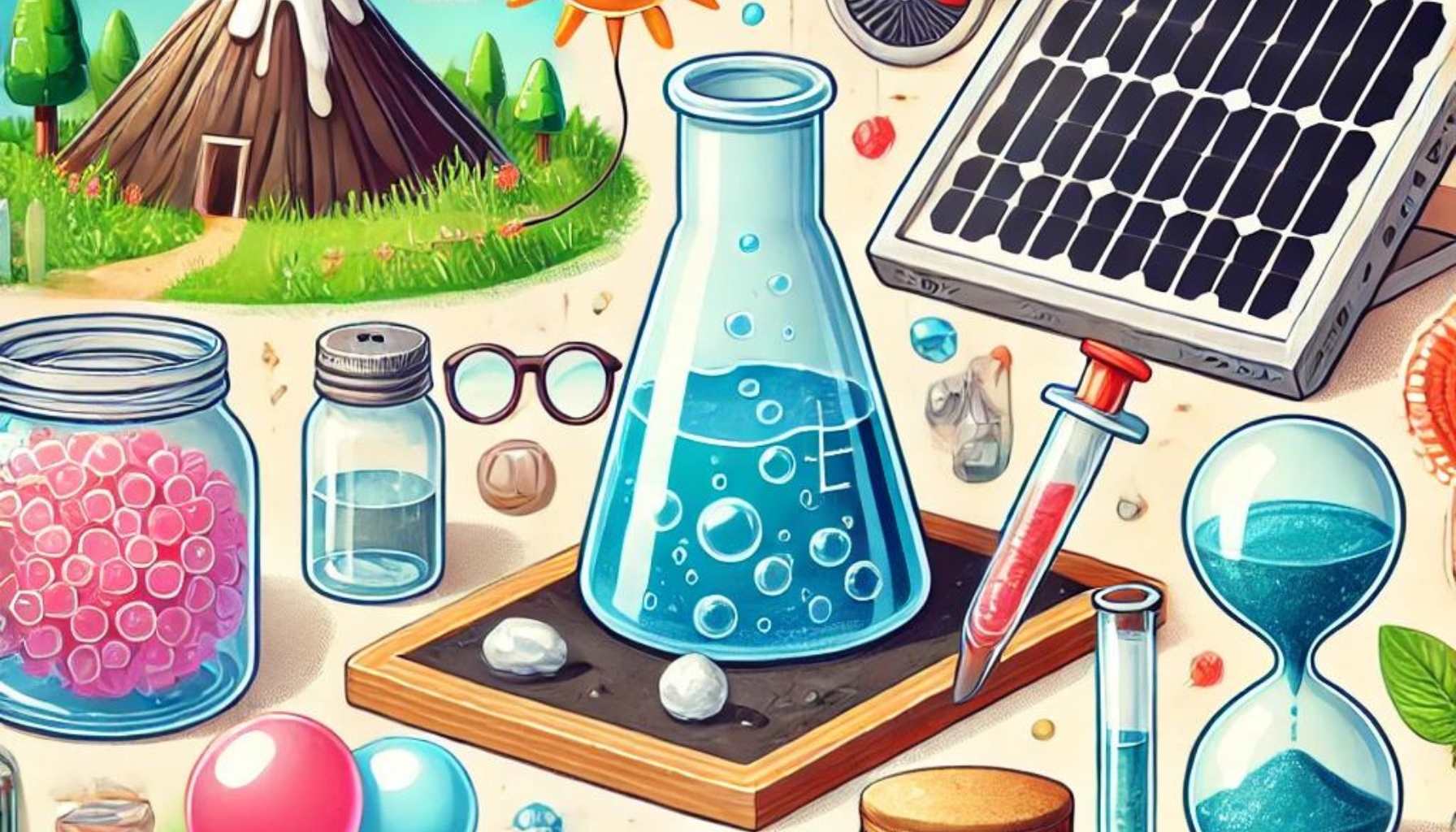In today’s world, where digital screens often dominate children’s attention, finding creative and educational activities that can be done at home is more important than ever. DIY projects not only keep kids engaged but also offer valuable learning experiences. The beauty of these projects is that you don’t need to purchase expensive kits or tools; you can create fun and educational experiments using everyday household items. In this article, we’ll explore the top five educational DIY projects that you can do with your children, all while using items you likely already have at home.
1. Build a Homemade Volcano
One of the most classic and exciting DIY projects for kids is creating a homemade volcano. This project not only entertains but also educates children about chemical reactions, specifically the interaction between baking soda and vinegar.
Materials Needed:
- Baking soda
- Vinegar
- Dish soap
- Food coloring (optional)
- A small bottle or container
- Modeling clay or playdough (optional for decoration)
Instructions:
- Begin by placing the small bottle or container in the center of a tray or large plate to catch any overflow.
- Surround the bottle with modeling clay or playdough to shape it like a volcano. Leave the top of the bottle exposed.
- Add 2-3 tablespoons of baking soda to the bottle.
- Pour a small amount of dish soap into the bottle, which will help create more foam during the eruption.
- If desired, add a few drops of food coloring to the bottle to make the “lava” more realistic.
- Pour vinegar into the bottle and watch the volcano erupt!
Educational Value: This project teaches children about acids and bases. The baking soda (a base) reacts with the vinegar (an acid) to produce carbon dioxide gas, which creates the bubbling, foaming eruption. This simple experiment is a great way to introduce children to basic chemistry concepts in a fun and memorable way.
2. Create a Homemade Water Filtration System
Understanding the importance of clean water and how filtration works is crucial for children. This DIY project allows them to build their own water filtration system using common household items.
Materials Needed:
- A plastic bottle
- Scissors
- Coffee filter or paper towel
- Sand
- Gravel
- Activated charcoal (optional)
- Dirty water (create this by mixing soil and water)
Instructions:
- Cut the bottom off the plastic bottle.
- Turn the bottle upside down and place a coffee filter or paper towel inside the neck of the bottle. This will act as the first layer of filtration.
- Add a layer of activated charcoal (if available) on top of the coffee filter.
- Add a layer of sand, followed by a layer of gravel.
- Slowly pour the dirty water into the top of the bottle and watch as it filters through each layer, coming out cleaner at the bottom.
Educational Value: This project demonstrates how filtration works, showing children how different materials can help remove impurities from water. It’s an excellent way to introduce environmental science concepts and the importance of clean water in everyday life.
3. Make Your Own Solar Oven
Harnessing the power of the sun to cook food is a fascinating way to teach children about renewable energy. Building a solar oven at home is not only an educational project but also a fun way to make a snack.
Materials Needed:
- A cardboard box (pizza box works well)
- Aluminum foil
- Plastic wrap
- Black construction paper
- Tape
- A pencil or stick
- S’mores ingredients (graham crackers, chocolate, marshmallows)
Instructions:
- Cut a flap in the lid of the cardboard box, leaving one side attached. This will be the oven’s lid.
- Cover the inside of the flap with aluminum foil, shiny side out. This will reflect sunlight into the box.
- Line the bottom of the box with black construction paper to absorb heat.
- Tape a piece of plastic wrap over the opening of the box to create a window. This will trap heat inside the box.
- Place the s’mores ingredients inside the box on top of the black paper.
- Prop the flap open with a pencil or stick so it reflects sunlight directly into the box.
- Place the box in direct sunlight and wait for the sun to melt the chocolate and marshmallows.
Educational Value: This project introduces children to solar energy and how it can be used as a renewable source of power. It’s an excellent way to discuss the importance of sustainable energy solutions and how they can be applied in everyday life.
4. DIY Balloon-Powered Car
Building a balloon-powered car is a fun way to teach children about basic physics concepts such as propulsion, motion, and air pressure. Plus, it’s a great hands-on activity that encourages creativity and problem-solving.
Materials Needed:
- A plastic bottle or cardboard tube
- Straws
- Wooden skewers or pencils
- Bottle caps or small plastic lids (for wheels)
- A balloon
- Tape and scissors
Instructions:
- Create the car body by using a plastic bottle or cardboard tube.
- Attach the straws to the bottom of the bottle/tube to act as axles for the wheels.
- Poke holes in the bottle caps or plastic lids and insert wooden skewers or pencils to create the wheels. Attach these to the straws.
- Tape a balloon to one end of the car, leaving the opening of the balloon free.
- Inflate the balloon and pinch the opening to keep the air inside.
- Release the balloon and watch the car propel forward as the air escapes.
Educational Value: This project demonstrates the principles of propulsion and the relationship between force, motion, and air pressure. Children learn how air can be used as a source of energy to move objects, which can lead to discussions about different types of energy and their applications.
5. Growing Crystals at Home
Growing crystals is a fascinating project that teaches children about the process of crystallization and the structures that form in nature. This project requires a bit of patience but results in beautiful, sparkly crystals that kids will love.
Materials Needed:
- Borax (found in the laundry aisle)
- Water
- A jar
- Pipe cleaners
- String and a pencil
Instructions:
- Shape the pipe cleaners into a desired form (e.g., a star or heart).
- Fill the jar with boiling water and add borax, one tablespoon at a time, stirring until dissolved. Continue adding borax until the solution is saturated and no more borax dissolves.
- Tie the pipe cleaner shape to a pencil with a string and hang it inside the jar, making sure it doesn’t touch the sides or bottom.
- Leave the jar undisturbed overnight. The next day, you’ll find crystals have formed on the pipe cleaner.
Educational Value: This project helps children understand the science behind crystallization and how different substances can form solid, geometric shapes. It’s a great introduction to basic chemistry and geology concepts.
Conclusion
DIY projects using household items are a fantastic way to combine fun and education. These activities not only keep children entertained but also provide valuable learning opportunities in science, technology, engineering, and mathematics (STEM). By engaging in these hands-on projects, children develop critical thinking skills, creativity, and a deeper understanding of the world around them. The best part? You don’t need to buy expensive materials—everything you need is likely already at home. So gather your supplies and start exploring the educational possibilities of DIY projects with your kids today!

